
Hands-on Review: the Blackmagic Pocket Cinema Camera 6K Pro
Let’s take a closer look into how the Blackmagic Pocket Cinema Camera 6K Pro fares against its previous siblings.
Several weeks ago, Blackmagic Design announced the Pocket Cinema Camera 6K Pro. A new variant of the 6K Pocket Cinema Camera. While it wasn’t the camera many were expecting, the camera’s features have certainly been asked for time and time again. I’ve been using the 6K Pro for two weeks now, so let’s dive deep into how I think the camera fares against its younger siblings.
You can find my 6K Pro test footage here:
Design
With the increase in boxed format cameras, see the Komodo, Z-Cam E2, and the Panasonic BGH1, many expected Blackmagic’s next Pocket Cinema Camera to follow the new design trend. The cubed design is versatile, compact, and offers a broad range of modular upgrades. However, the Pocket Cinema Camera 6K Pro, which I’ll simply refer to as the 6K Pro from here on out, follows the same design principle as the previous cameras.
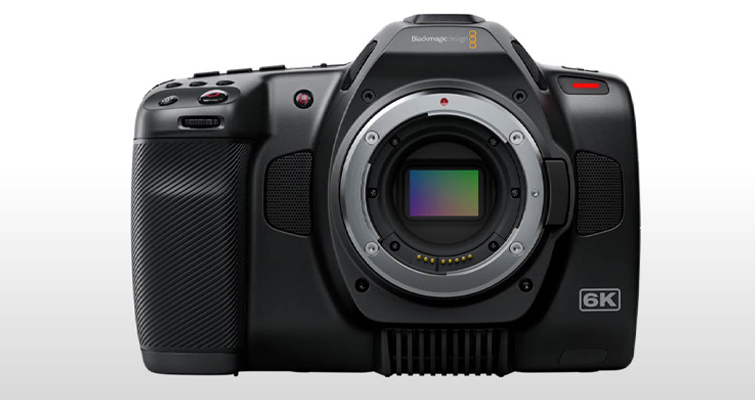
While there’s nothing inherently disproportionate with the design, and it’s fine for most circumstances, it’s widely accepted that the camera’s bulky handgrip and weight distribution doesn’t make the camera that handy for use with gimbals without additional counterbalance tools.
Due to the new hardware, which we’ll discuss shortly, the camera is slightly larger and heavier than the standard 6K model (by now, you should know the word “Pocket” is in ethos and not to be taken literally).
- The 6K Pro comes in at 180mm x 112 x 123 – 1238g.
- Whereas the 6K is 178.1mm x 101.3mm x 96mm – 900g.
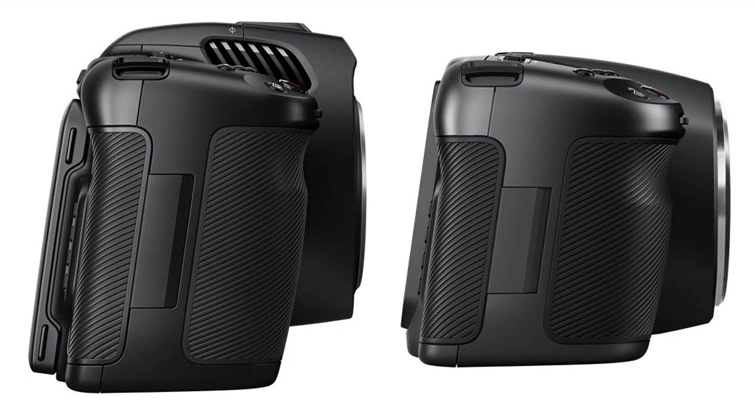
With that, it (of course) renders your camera cage null and void. So, before instantly jumping up to the 6K Pro, you’d have to wait for the manufacturing of third-party cages. Although with the rate at which the SmallRig moves, I wouldn’t be surprised if a 6K Pro cage popped up across production outlets within the next few weeks.
Internals
So, you want to know about shooting in 6K? Or, how the Super-35mm sensor differs from the sensor found in the Pocket 4K? Well, you can find all that information in our 6K review. As I noted in my initial hands-on impression video (see below), if you want to see what images the 6K Pro produces, you can do so by searching for BMPCC6K footage as the sensor is no different from the Pocket 6K.
It houses the same codecs and resolutions options. And, while it does ship with the Gen 5 color science that was introduced with the 12K, both the Pocket 4K and Pocket 6K will be receiving a Gen5 firmware update. So, you’ll be able to get the same image from the Pocket 6K as the Pocket 6K Pro.
Likewise, the user interface is completely the same bar with a few additional new features to accommodate the Pro EVF.
However, there’s a new RGB histogram. This is a feature that will tell users if a specific RGB value has been clipped. As previously with the histogram, it would only tell you if the luma value was clipped.
If, overall, there’s no internal difference with the camera, what gives this tool the “Pro” status? Well, this camera excels over the 6K with the efficiency of helping you get that image.
Built-In NDs
I’ve produced many pieces on variable ND filters throughout my numerous blog posts here on The Beat. From how to fix the cross pattern you can get from over-rotating the filter, to using a broken filter to create light images. However, while variable NDs are a stepping stone for a young filmmaker needing a tool to get his 5D Mark II setup to 1.4 (for some unknown reason) in broad daylight, they can be bothersome in more professional circumstances.
From swapping filters to different lenses, and then attaching the various step-up/step-down rings, it’s not the end of the world. But, it does slow down shooting. Likewise, variable NDs are prone to ghosting and flaring because two filters are stacked on top of each other.
Well, the 6K Pro quashes all that with built-in NDs that cover six stops and increase two-stop variables.
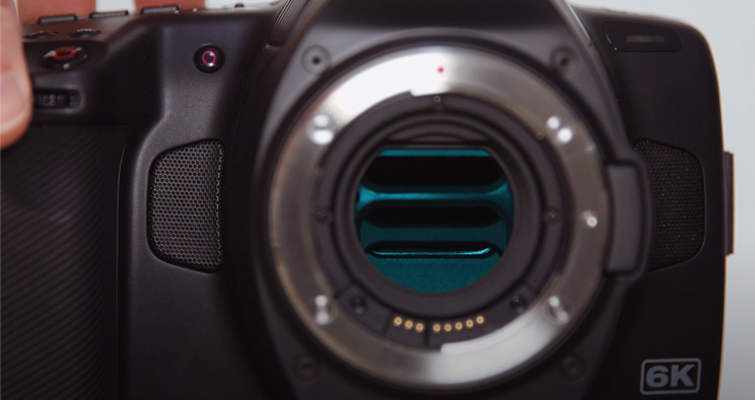
They operate with the two buttons on the back of the camera, and for some reason, I continued to click the function buttons on top of the camera. I’m not sure why, but it felt more natural to reach towards the top of the camera with my index finger, instead of switching the NDs with my thumb.
The NDs slot in and out of place, so you wouldn’t be able to rack the exposure mid-shoot.
Fast, useful, and for someone who primarily shoots outside, the built-in NDs are worth the price of the upgrade by themselves.
New LCD
While the built-in NDs are one reason behind a larger body, the second is that of the new tilt-screen. Yes, a tilt-screen, one of the first features initially requested when the 4K hit the market in 2018.
This has seemingly put a halt to the third-party modifications to give the Pocket Cameras a tilt screen. While the argument can be made that buying the tilt-screen modification for $528.00 – $548.00 is still cheaper than selling the Pocket 4K or Pocket 6K at a loss, then buying the 6K Pro, you still have to install the tilt-screen yourself, and usually any form of modification will void the warranty of the camera.
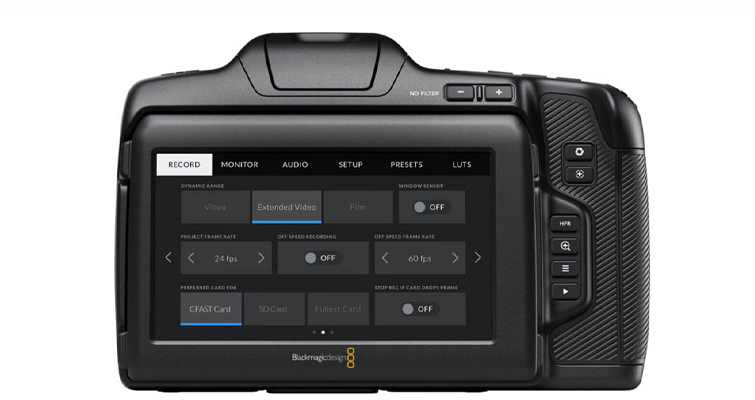
Just last week, I had a comment on my Pocket 4K test vid about how they thought it was ridiculous that Blackmagic still didn’t put in a flip screen so you can record yourself while vlogging. These are cinema cameras, they’re not for vlogging. There’s no autofocus or in-body stabilization. So, even if they did have a flip screen, you’re vlogging footage will be awful, but even then—cinema camera—it’s in the name.
In my initial review for the 4K, I said:
The screen, however, is perhaps my biggest grievance. I couldn’t help but feel like the camera was designed to use with a dedicated monitor. There’s no articulating screen for low angles or awkward positions—you’ll have to hit record and return to a comfortable position. In 2018, for a compact system that is solely designed for filmmaking, an articulating screen is a must.
With the Pocket 6K Pro, that issue has been completely eradicated. As you can tilt the screen upward or downward, it allows for comfortable shooting no matter your angle.
But for me, at least, one of the better aspects of the new screen isn’t that it tilts—it’s an HDR LCD with a bright 1500 nits. If you’ve used one of the Pocket Cinema Cameras before and you didn’t have an external monitor, you’ll know that when out shooting, there’s a lot of shielding the LCD. That’s because, in bright sunlight, all you can see is your face in the reflection. This screen, especially when turned up to 100%, is faultless in bright sunlight.
However, one issue I encountered with the screen was that, at times, it often felt like the white balance was extremely off. The image on the LCD felt notably blue, even though the returned results back home on the computer were how I expected them to look.
I wasn’t too sure what was causing this, but today, on the Blackmagic Forum, user Jamie LeJeune said:
To catch you up here, the LCD display on some 6K Pocket Pro units is visibly quite a bit cooler than the D65 than it should be; hence, what should appear to be black or white or neutral gray on the LCD appears to be slightly blue-tinted on the LCD. It’s not an issue with the white balance of the sensor or the recorded images, simply an issue with the LCD display only. It appears to be limited to a batch of cameras that went out, but not all cameras. If you scroll back in the thread, you can see examples of units with more or less correct D65 balanced LCD displays. Unfortunately, the unit that I received from my BMD reseller has the issue. As with past manufacturing QC issues on BMD cameras, I’m confident that, eventually, BMD will issue a remedy. Though, if the past is any guide, it may take a fair bit of time before that happens. The consolation is that besides the LCD white balance, the unit that I have works perfectly, the articulating screen and the ND filters are fantastic additions, and no one should be making any decisions based on the white balance of any camera LCD anyway (no matter how accurate it appears to be). The issue is merely a minor inconvenience.
Therefore, note that if you find yourself with a unit displaying overly blue images, it’s just the LCD, and it will be fixed.
Extra Audio Port
Another cause for the larger diameters of the camera is an additional XLR input. They are still mini XLR inputs, but the additional port now allows you to use two professionally balanced mics.
Two weeks ago I produced a video for Shutterstock Tutorials where I mentioned that in lower-priced cameras, you’re also only ever going to find the one mic input.
And, once again (as always), just a few weeks after writing something, Blackmagic decides to quash that issue. There’s not a lot to say about this addition other than the benefit of recording two separate audio tracks.
Pro EVF
On top of the camera, you’ll now find an additional area where you can attach the Pro EVF. This is an added tool that was also announced with the 6K Pro, but one that you’ll need to buy separately for $495.00
Only compatible, at the moment, with the 6K Pro, it slots right into the top of the camera. The display provides a 1280 x 960 resolution image on its crisp micro-OLED display and, quite like a mirrorless camera, when you place your eye into the EVF, the LCD screen will turn off.
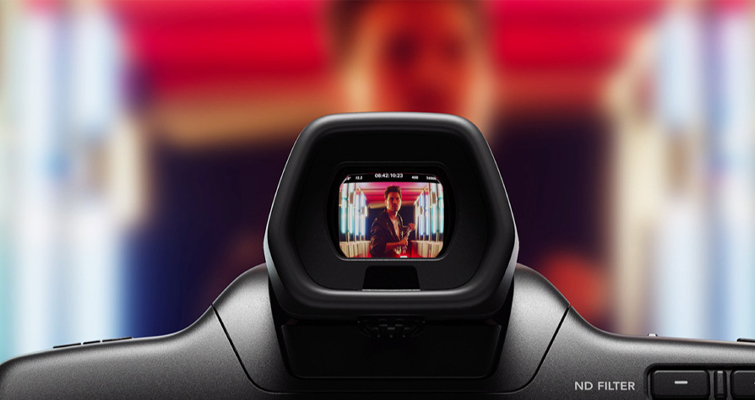
Given the EVF costs 1/5th of the 6K Pro, it’s no whimsical attachment to buy. However, the design and build of the EVF reflect the price. It accepts input frame rates up to 60 fps and 24-bit RGB color for a clear representation of your image. Its glass diopter features -4 to +4 adjustment. It can swivel up to 70°, and a set of four eyecups are included and provide a compact, medium, cinematic left eye and cinematic right eye configurations.
However, for myself, I didn’t find a use for the EVF. As the screen is incredibly bright, clear, and now tilts, for the life of me, I’m just unsure as to when I’d use this. It’s a handy tool that produces clear images. Still, for every possible situation where I’d opt to use a viewfinder, especially one positioned like a DSLR more so than a cinema viewfinder, the screen is more than suitable. However, this might just come down to my shooting style.
In my hands-on video, a subscriber mentioned that the EVF could create three points of contact to avoid extreme handheld shake. And, while I can see the EVF being used for such circumstances, that’s a very specific situation for a $500 accessory. Likewise, as someone who wears glasses, I wouldn’t want the EVF up against my face while moving with a camera that would restrict all vision because it sits right in front of you.
LP-E6 – See Ya!
Another new element is the new battery. We have moved from the Canon LP-E6 and now use a Sony NP-F570. We all know that the Pocket Cinema Cameras eat the interior batteries like no tomorrow, and has been a constant critique of the line.
Does the NP-F570 last longer than the LP-E6? Yes. Is it significantly longer? Not so much. I believe an officially branded LP-E6 gave you something like 40-50 minutes on the Pocket 4K. Looking at my files from the other day, I went out shooting with a fully-charged NP-F570. My first shot was at 14:18, and my final shot, in which the battery died, was at 15:38.
I was recording, or had the camera on, for that majority of the duration, so you’re looking at ninety minutes—maybe more if you turn the camera off after each shot, but I know that’s not always practical. For me, it hasn’t been the case of, Oh wow, I still have so long left. It was a case of, Ok, we’re about to run out of power in the next thirty.
Like the 4K and 6K, this camera has a battery grip, too. However, with this one, you don’t have to remove the camera’s battery so you can be powered from three batteries at once. However, the grip doesn’t come with batteries, so you’ll have to buy two more.
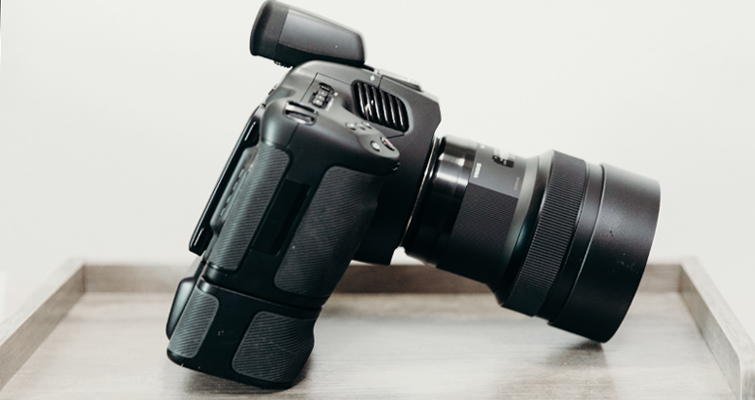
With the grip, three batteries, and a bulky lens attached to the 6K Pro, the weight of the camera starts to become quite noticeable. With no IBIS, a heavier camera results in my stability when shooting handheld. Conversely, the weight becomes noticeable when carrying the camera from shot to shot.
Final Thoughts
A lot of the time when we write about a new camera, there’s a lot of focus on what new things the camera can do. But with the 6K Pro, there’s near enough nothing new in regards to image processing. It’s more centralized around helping you obtain a better image that was already available in the 6K. However, it’s important to note that the Pocket 6K Pro is not a new generation of Pocket Cameras. Like the PS4 to PS4 Pro, the hardware is improved, and when I say slightly, it’s reflected in the price—it’s an extra $500. So, I guess that $500 needs to be weighed against the pros when working with the 6K.
Do you find yourself needing a field monitor to properly view the footage, either with awkward angles or because it’s too bright? Are you buying too many batteries because you lose power too quickly? Are you losing shooting time due to switching and moving your ND filters when you swap lenses? If so, I recommend the 6K Pro over buying the 4K or 6K.
If you have the 6K already and have these external components, unless you’re trying to condense your setup, I wouldn’t say it’s worth dropping the 6K for the 6K Pro. Gen5 is on the way, plus there’s no image difference between the two cameras.
However, as someone who finds these elements a detrimental factor when shooting, I would rate the 6K Pro as the best camera out of the three current Pocket Cameras in production.
Nevertheless, the Pocket 6K Pro doesn’t remove all the issues of the Pocket line. You’re still going to need a cage, the battery life isn’t wholly improved, the camera still feels like it would easily break if dropped, and adjusting audio while recording is a fickle process. However, to counter my own point, this is a $2.5K camera. And, the images the camera produces still doesn’t seem like it should fit within this price range. They are near enough unbeatable within this bracket. Likewise, the BRAW format is incredibly friendly. And, if you really needed those additional features, that’s what the URSA G2 is for.
For more reviews, check out the articles below:






